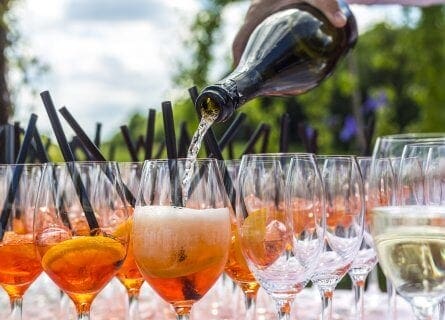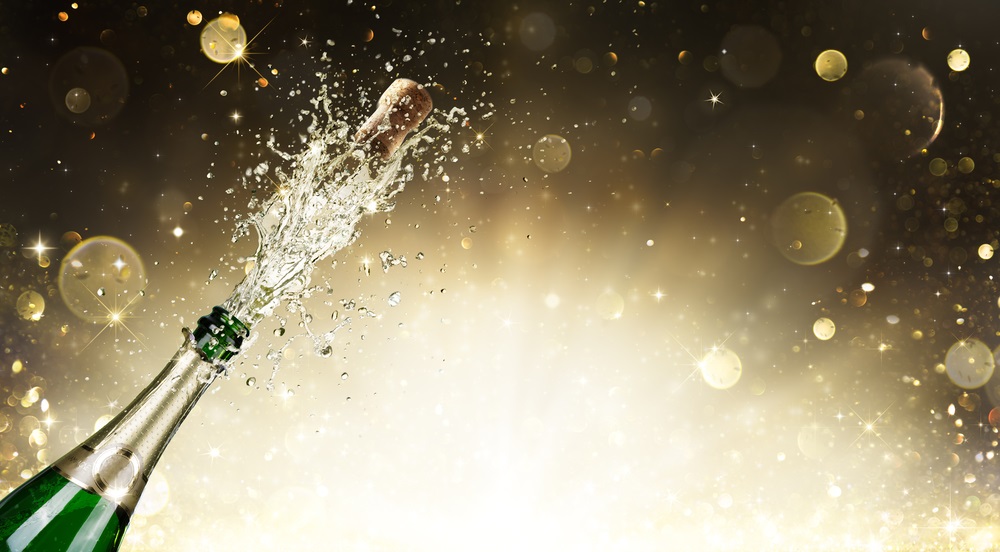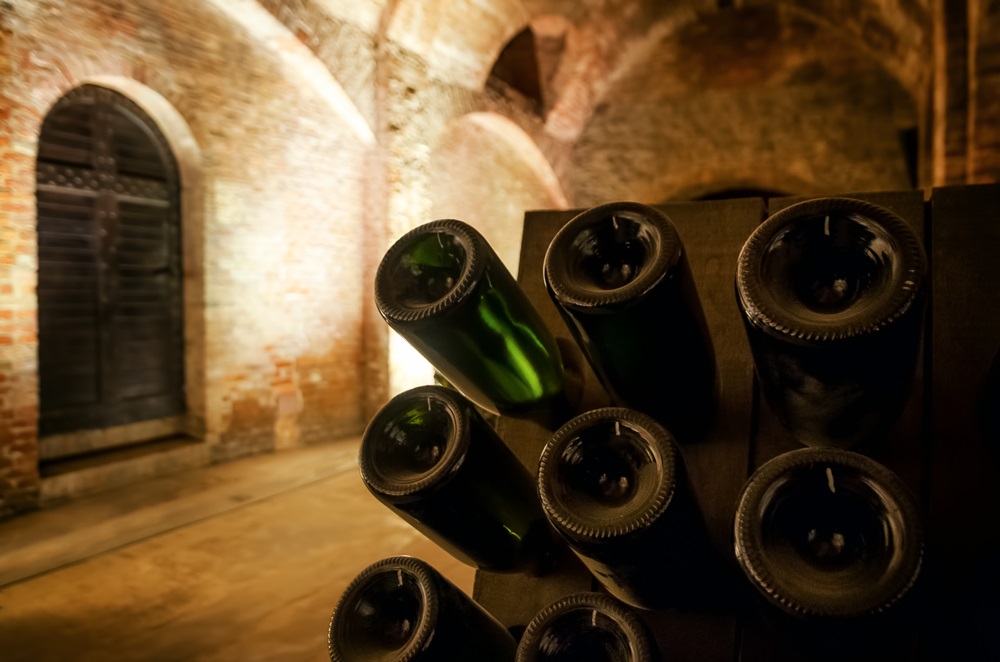
Cremant: France’s Forgotten Sparkling Wine?
February 6, 2018
Unearth France's Crémant:🍾 the overlooked sparkling wine with a rich history, diverse flavors, and hidden charm. Cheers! 🇫🇷
By: James lawrence / Last updated: December 12, 2024
Sparkling wine can be made almost anywhere if you have the correct equipment. It is an expanding global enterprise (despite what the Champenoise would have us believe), with key players in the US, Spain, England, Italy, Australia, South Africa, and even Russia! The climatic conditions, terroir, and grape varieties will vary dramatically, of course – the exquisite Riesling Sekts of Germany have little in common with Champagne. Yet all the best sparkling wines rely on the Méthode Champenoise to turn still wine into rich, complex, and weighty fizz. To summarize, it involves bottling young base wine with the addition of sugar and yeast. A secondary fermentation then occurs within the confines of the bottle, dissolving carbon dioxide into the wine as a byproduct. Voila! – a wine that sparkles.

The question of who created this global benchmark for producing high-quality sparkling wine has been hotly debated. The Champenoise, of course, make endless references to their cultural icon: Dom Perignon. However, while the legendary monk did master the art of blending, the numerous special techniques and technological advancements required for the traditional method cannot solely be attributed to Champagne’s hero. The region started its life as a center of still wines, supplying the bourgeoisie of Paris for many centuries. However, it was not until the late 1600s that the first sparkling wines appeared, and not until the 19th century that Champagne became renowned for making luxury fizz.
Some would argue that we should direct our attention to the Languedoc. Several producers in the region have claimed that the oldest French sparkling wine is the Blanquette de Limoux, first referenced in the 16th century. Furthermore, it is said that the Benedictine monks of Saint-Hilaire pioneered the Méthode Rurale, whereby the wine was bottled before fermentation had finished, trapping a certain amount of CO2 in the wine. This ancient technique, now called Méthode Ancestrale, could be described as a rustic precursor to the traditional method. However, sparkling wine expert Tom Stevenson has debunked the claim, stating that there is no hard evidence that wines were made to deliberately sparkle in France until at least 1695.
According to historical research, the English pioneered the Traditional Method. Indeed, the most reliable document we have dates back to 1662, presented to the Royal Society in London by English physician and scientist Christopher Merret. In the document, Merret outlines the foundations of the traditional method, discussing the addition of ‘sugar and molasses to make the drink brisk & sparkling.’ It is incontrovertible proof that scientists in England were experimenting with producing sparkling wines long before the establishment of Moet & Chandon and Louis Roederer. However, the first official mention of sparkling Champagne did not occur until the 18th century, several decades after Merret’s presentation.
However, the English scientific community cannot take sole credit for creating the traditional method. Instead, Merret laid the groundwork and provided the French entrepreneurs with a model they could refine and improve. The standardization of the traditional method in the late 19th century resulted from a gradual evolutionary process involving glass manufacturers, winemakers, industrialists, and marketers. But there is no doubt that Champagne lovers owe Merret a debt of gratitude.
For many years, the process of undertaking a secondary fermentation in bottle was known as the ‘Méthode champenoise.’ Producers widely used it in regions as diverse as Penedes, Napa, and Stellenbosch. However, the Champagne industry persuaded the EU to outlaw the term unless the wine is produced in the Champagne Region. Hence, it is replaced with the term Méthode Traditionnelle or Méthode Classique in non-champagne-produced sparkling wines.
Historically, Champagne was produced as a sweet style, containing high levels of residual sugar. It was not until the 1800s that dry wines became fashionable – today, the market for sweet or demi-sec fizz is minute. It should also be emphasized that several methods are commonly employed to make sparkling wine, including the Charmat (tank-fermentation) method and the transfer method. Yet almost every critic agrees that the traditional method is unsurpassed in its ability to craft complex and age-worthy fizz. The underlying reason is the meticulous attention to detail required and a cultural emphasis (particularly for the best cuvées) on extended bottle aging before release. It is exceedingly rare for still wine brands to keep stock for decades before being brought to market. The top Champagne houses often release back catalogs of late-disgorged vintages aged in their cellars for 20-plus years. This is the magic behind all great sparkling wine. If the raw materials are first-rate, then the winemaker has limitless potential to create a truly great drink that will age for decades.

The world’s most excellent sparkling wines begin their life in the vineyard. As the old adage goes, you cannot make a silk purse from a sow’s ear. Yet it is only after the harvest that the winemaker’s skill and talent are tested.
One of the most crucial steps in the winery involves releasing the must from the grapes. Winemakers from all regions desire the purest possible must, achieved by gently pressing whole bunches, ensuring minimal contact between must and skins. Many Champagne houses swear by the old-style basket press, believing it gives the finest must. Other producers favor sophisticated pneumatic presses that use state-of-the-art technology.
Sparkling winemakers classify the juice released from the press in order of quality. Only the free-run juice is used for the finest vintage cuvées, while the second pressing (often containing more phenolic compounds) is reserved for NV expressions. After pressing, the must is transferred to small vats and chilled before fermentation. This helps to stabilize and clarify the wine, preventing the onset of early fermentation.
After cold stabilization, the winemaker will ferment the wine, typically in stainless steel or concrete. However, certain producers like Krug favor old oak barrels, adding structure and potency to the finished product. It will stabilize again after malolactic fermentation (softening the harsh malic acid in the wine). Then, it is time to prepare for the winter blending, an annual event that will make or break a bottle of sparkling wine and decide its future.
Only with great skill and experience can winemakers hope to produce consistently high-quality NV (non-vintage) sparkling wines year in, year out. How the Champenoise and other regions achieve this is something of a minor miracle, but blending is undoubtedly the most vital stage in the traditional method. Sometimes, it can involve tasting hundreds of different base wines, looking into the future, and predicting how each wine will age and develop after the secondary fermentation in bottle. After every wine has been tasted, the winemaker will decide whether to make a vintage expression or blend in reserves (wines from older vintages) to craft an NV style. The proportions will be agreed upon, and a certain percentage of the young wines may be kept back for future years. After the exact blend is finalized, the wines are clarified and racked before bottling.
Wine is transferred to the bottling line before a small volume of yeast and sugar is added to stimulate the secondary fermentation in bottle. As the yeast devours the sugar, CO2 bubbles will dissolve into the wine, making it sparkle; it is essential to use thick glass to withstand the pressure building up inside. Many producers ensure that the temperature is as low as possible, as this slows down the process and results in smaller bubbles and a more refined mouthfeel.
After blending, this is the most crucial stage in determining any sparkling wine’s final style and quality level. The vast majority of premium fizz is aged in cool cellars, often for many years after the second fermentation. The bottles are stored ‘sur lattes’ (horizontally) in storage racks separated by laths. This safeguards against a possible glass explosion, which could affect entire rows of bottles unless a physical barrier is erected.
During the maturation process, several critical chemical changes occur that profoundly influence the aroma and flavor of the wine. In essence, dead yeast cells remain after the fermentation is over; as they decay, the cells release a multitude of substances, including amino acids, peptides, fatty acids, and proteins. Some act as flavor enhancers, and others alter the bouquet. By law, non-vintage Champagne must spend 12 months aging on the lees before it can be disgorged – many of the top vintage cuvées are aged for a decade or more. In the New World, it is entirely left to the discretion of the individual wine estate. However, many winemakers emulate the Champagne model of long aging before release.
When the wine has sufficiently aged, the producer will need to remove the dead yeast cells from the bottleneck before being brought to market, and to achieve this, the bottles are transferred to a wooden rack and stored at a 35-degree angle. The traditional Champagne houses then ‘riddle’ by hand – bottles are tilted from horizontal to vertical, encouraging the sediment to accumulate in the bottleneck. It is precise and slow work, so many larger firms use a gyropalette machine. The bottles are stored in a mechanized rack at an angle and rotated every eight hours, causing the sediment to collect in the neck quickly. It can riddle whole batches in under a week.
After the riddling process, the best producers age their wines for several years – this time vertically – before disgorgement. Again, the rationale is that the wine flavors and aromas are further enhanced by contact with the yeast cells in the neck.
Then comes another vital stage in the wine’s life cycle. Disgorgement is simply the process of removing dead yeast cells, inevitably exposing the wine to air and potentially damaging levels of oxidation, shortening its life span. This can be done by hand, but it requires incredible skill and dexterity to remove the sediment at lightning speed. Most wineries prefer to freeze the bottle’s neck and use a machine to eject the sediment quickly. Unless a zero-dosage (sugar-free) style is desired, most sparkling wines are topped up with the addition of wine and sugar, known as liqueur d’expedition. This helps to balance out the acidity in all great sparkling wine. The bottle may then be aged for a further period after disgorgement before it is sold. This adds complexity and mouthfeel.
Christopher Merret’s groundbreaking research has stood the test of time. After several centuries, the traditional method remains the benchmark for crafting high-quality sparkling wine. There have been experiments, of course, and modern research conducted into viable alternatives. In Germany, one Wegler-Deinhard pioneered using propellers fitted into stainless steel tanks to periodically stir up the dead yeast cells after the fermentation had finished. After several years of tank aging, critics were amazed at the quality of these wines. However, his experiment never caught on, and quality-focused winemakers worldwide nearly always use the traditional method. In particular, the Champenoise regard the traditional method as de rigueur. They are unlikely ever to abandon it.
Yet attitudes and approaches are changing. It is becoming trendy to reference the disgorgement date on labels, a practice that would have been unthinkable in the mid-20th century. Moreover, the importance of dosage is shrinking, as climate change leads to riper grapes in Champagne and lower acidity levels. As a result, Zero-dosage (sugar-free) and low-dosage Champagnes are becoming an increasingly regular part of a grower’s portfolio – everyone has not welcomed this. As Champagne expert Tom Stevenson observed in 2014: “I have long maintained that Champagnes with five grams or less of residual sugar do not age as smoothly or as gracefully as Champagnes with six or more grams. I’m also certain that six is not a magical figure.” Only time will tell whether heightened ripeness levels can be a sufficient substitute for dosage.
If you would like us to customize an exclusive luxury tour, contact us and let us know your travel plans. We offer luxury food and wine tours for private groups of a minimum two guests. In addition, all of our private, chauffeured tours are available year-round upon request.

